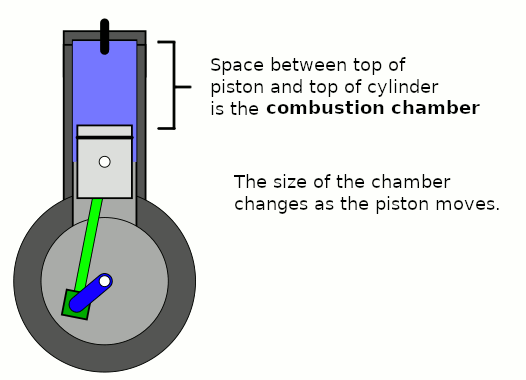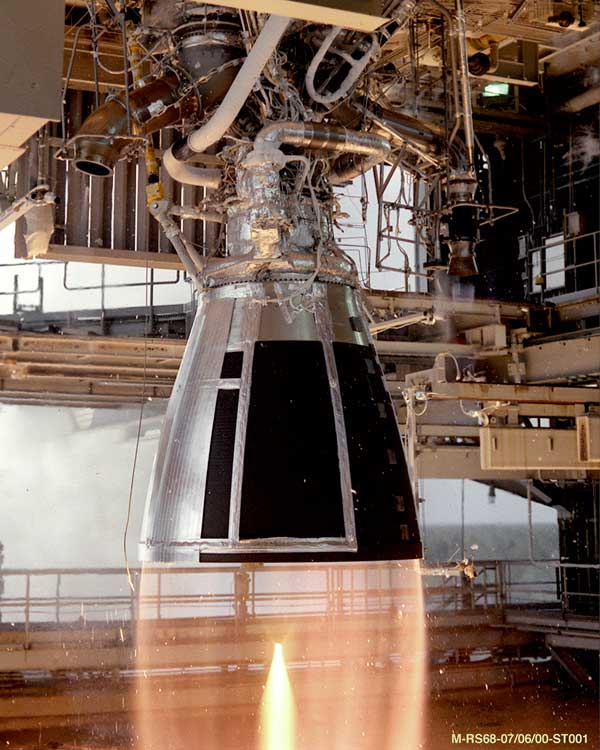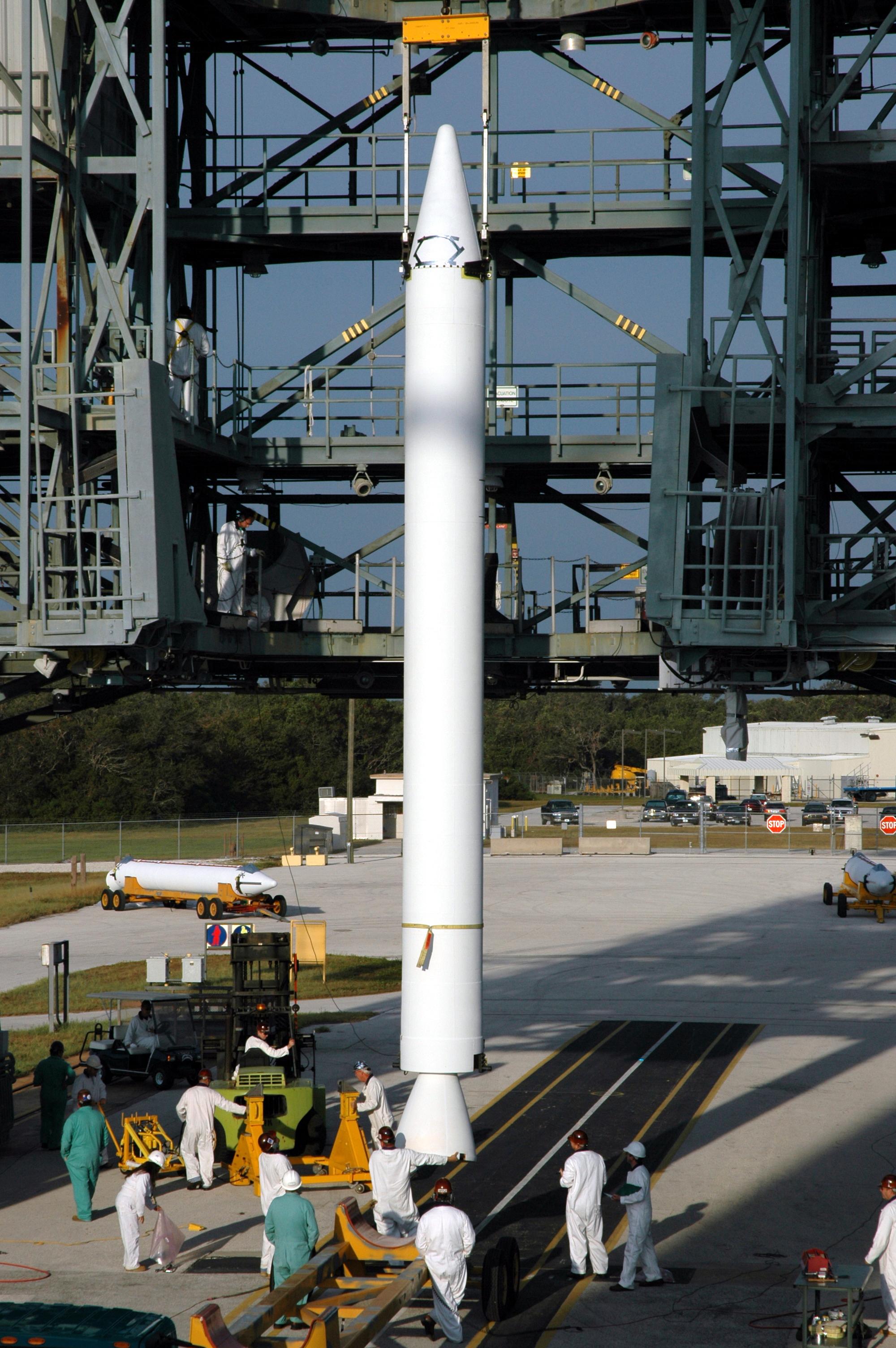|
Al-Abid
The Al-Abid( ar, العابد) LV was an Iraqi three-stage "Satellite launch system", a civilian project that was commenced in 1988. The Iraqis intended to launch an Al-Ta'ir satellite with the help of such a launch vehicle. The Iraqis therefore pursued a LV with stages based on Scud missiles and the S-75 Dvina. However, only the first stage could be tested in December 1989 and according to General Ra'ad the next stages could not be developed. General Ra'ad says that not even the drawings of the second and third stage vehicles are available and that no final report could be produced. UN inspectors and U.S intelligence did not offer many details regarding the Al-Abid launch vehicle as they were not interested in it. Planning In 1988 Iraq declared a program to design as well as manufacture a LV capable of putting a satellite into orbit. The project was entirely civilian and was to be carried under the supervision of MIMI and had scientists from the Space Research Centre(SRC ... [...More Info...] [...Related Items...] OR: [Wikipedia] [Google] [Baidu] |
Al-Tammuz (missile)
The Al-Tammuz missile was an Iraqi project to design a surface-to-surface missile (SSM) based on scud technology that could deliver a payload of at least 1,000 kg to a distance of 1,200 km. The missile was a potential delivery system that could have helped Iraq to deliver nuclear payloads. History Iraq had been planning to produce a liquid propelled surface-to-surface missile having a range of 1,200-2,000 km based on current scud technology. The Iraqis had started Project 144 for the production and modification of missile systems and designated it to the Al Qaya state establishment. The Iraqis also assigned project 1729 to Nassr State Enterprise, Research and Development Center, Taji-Baghdad. The Iraqis also started Project 1728 for indigenous scud engine development and production. Practical work on this missile, however, did not start until April 1989, according to Iraqi suggestions the nuclear capable version would not have been ready by 1993, two years after ... [...More Info...] [...Related Items...] OR: [Wikipedia] [Google] [Baidu] |
Al-Ta'ir (satellite)
The Al-Ta'ir ( ar, الطائر) satellite was an Iraqi small experimental satellite program designed for conducting communication and rangefinding. It started in the 1980s under the leadership of Saddam Hussein and was to be put in LEO with the help of an Ariane 4 or al-Abid vehicle; however, after the Gulf War, Iraq could not obtain such vehicles and could only develop the satellite. History It was in the 1980s that Iraq under Saddam Hussein sought to produce its own satellite however foreign political opposition made this difficult thus research could only formally begin in 1988 with the start of the Iraqi space program in which the development of a launch vehicle was also sought. According to the Space Applications Center of the Space Technology Directorate within Iraq's Ministry of Science & Technology Sarmad D.S. Dawood Iraq's scientific research council established a space research center, Iraqi scientists of the research center managed to produce two identical flight-rea ... [...More Info...] [...Related Items...] OR: [Wikipedia] [Google] [Baidu] |
Launch Vehicle
A launch vehicle or carrier rocket is a rocket designed to carry a payload (spacecraft or satellites) from the Earth's surface to outer space. Most launch vehicles operate from a launch pads, supported by a launch control center and systems such as vehicle assembly and fueling. Launch vehicles are engineered with advanced aerodynamics and technologies, which contribute to large operating costs. An orbital launch vehicle must lift its payload at least to the boundary of space, approximately and accelerate it to a horizontal velocity of at least . Suborbital vehicles launch their payloads to lower velocity or are launched at elevation angles greater than horizontal. Practical orbital launch vehicles are multistage rockets which use chemical propellants such as solid fuel, liquid hydrogen, kerosene, liquid oxygen, or Hypergolic propellants. Launch vehicles are classified by their orbital payload capacity, ranging from small-, medium-, heavy- to super-heavy lift ... [...More Info...] [...Related Items...] OR: [Wikipedia] [Google] [Baidu] |
United States Intelligence Community
United may refer to: Places * United, Pennsylvania, an unincorporated community * United, West Virginia, an unincorporated community Arts and entertainment Films * United (2003 film), ''United'' (2003 film), a Norwegian film * United (2011 film), ''United'' (2011 film), a BBC Two film Literature * United! (novel), ''United!'' (novel), a 1973 children's novel by Michael Hardcastle Music * United (band), Japanese thrash metal band formed in 1981 Albums * United (Commodores album), ''United'' (Commodores album), 1986 * United (Dream Evil album), ''United'' (Dream Evil album), 2006 * United (Marvin Gaye and Tammi Terrell album), ''United'' (Marvin Gaye and Tammi Terrell album), 1967 * United (Marian Gold album), ''United'' (Marian Gold album), 1996 * United (Phoenix album), ''United'' (Phoenix album), 2000 * United (Woody Shaw album), ''United'' (Woody Shaw album), 1981 Songs * United (Judas Priest song), "United" (Judas Priest song), 1980 * United (Prince Ital Joe and Marky Mark ... [...More Info...] [...Related Items...] OR: [Wikipedia] [Google] [Baidu] |
Combustion Chamber
A combustion chamber is part of an internal combustion engine in which the fuel/air mix is burned. For steam engines, the term has also been used for an extension of the firebox which is used to allow a more complete combustion process. Internal combustion engines In an internal combustion engine, the pressure caused by the burning air/fuel mixture applies direct force to part of the engine (e.g. for a piston engine, the force is applied to the top of the piston), which converts the gas pressure into mechanical energy (often in the form of a rotating output shaft). This contrasts an external combustion engine, where the combustion takes place in a separate part of the engine to where the gas pressure is converted into mechanical energy. Spark-ignition engines In spark ignition engines, such as petrol (gasoline) engines, the combustion chamber is usually located in the cylinder head. The engines are often designed such that the bottom of combustion chamber is roughly in ... [...More Info...] [...Related Items...] OR: [Wikipedia] [Google] [Baidu] |
Rocket Engine
A rocket engine uses stored rocket propellants as the reaction mass for forming a high-speed propulsive Jet (fluid), jet of fluid, usually high-temperature gas. Rocket engines are reaction engines, producing thrust by ejecting mass rearward, in accordance with Newton's third law. Most rocket engines use the combustion of reactive chemicals to supply the necessary energy, but non-combusting forms such as cold gas thrusters and nuclear thermal rockets also exist. Vehicles propelled by rocket engines are commonly called rockets. Rocket vehicles carry their own oxidiser, unlike most combustion engines, so rocket engines can be used in a vacuum to propel spacecraft and ballistic missiles. Compared to other types of jet engine, rocket engines are the lightest and have the highest thrust, but are the least propellant-efficient (they have the lowest specific impulse). The ideal exhaust is hydrogen, the lightest of all elements, but chemical rockets produce a mix of heavier species, red ... [...More Info...] [...Related Items...] OR: [Wikipedia] [Google] [Baidu] |
Apogee Kick Motor
An apogee kick motor (AKM) is a rocket motor that is regularly employed on artificial satellites to provide the final impulse to change the trajectory from the transfer orbit into its final (most commonly circular) orbit. For a satellite launched from the Earth, the rocket firing is done at the highest point of the transfer orbit, known as the apogee. An apogee kick motor is used, for example, for satellites launched into a geostationary orbit. As the vast majority of geostationary satellite launches are carried out from spaceports at a significant distance away from Earth's equator, the carrier rocket often only launches the satellite into an orbit with a non-zero inclination approximately equal to the latitude of the launch site. This orbit is commonly known as a " geostationary transfer orbit" or a "geosynchronous transfer orbit". The satellite must then provide thrust to bring forth the needed delta v to reach a geostationary orbit. This is typically done with a fixed ... [...More Info...] [...Related Items...] OR: [Wikipedia] [Google] [Baidu] |
Solid-propellant Rocket
A solid-propellant rocket or solid rocket is a rocket with a rocket engine that uses solid propellants (fuel/ oxidizer). The earliest rockets were solid-fuel rockets powered by gunpowder; they were used in warfare by the Arabs, Chinese, Persians, Mongols, and Indians as early as the 13th century. All rockets used some form of solid or powdered propellant up until the 20th century, when liquid-propellant rockets offered more efficient and controllable alternatives. Solid rockets are still used today in military armaments worldwide, model rockets, solid rocket boosters and on larger applications for their simplicity and reliability. Since solid-fuel rockets can remain in storage for an extended period without much propellant degradation and because they almost always launch reliably, they have been frequently used in military applications such as missiles. The lower performance of solid propellants (as compared to liquids) does not favor their use as primary propulsion in mo ... [...More Info...] [...Related Items...] OR: [Wikipedia] [Google] [Baidu] |
Liquid-propellant Rocket
A liquid-propellant rocket or liquid rocket utilizes a rocket engine that uses liquid propellants. Liquids are desirable because they have a reasonably high density and high specific impulse (''I''sp). This allows the volume of the propellant tanks to be relatively low. It is also possible to use lightweight centrifugal turbopumps to pump the rocket propellant from the tanks into the combustion chamber, which means that the propellants can be kept under low pressure. This permits the use of low-mass propellant tanks that do not need to resist the high pressures needed to store significant amounts of gasses, resulting in a low mass ratio for the rocket. An inert gas stored in a tank at a high pressure is sometimes used instead of pumps in simpler small engines to force the propellants into the combustion chamber. These engines may have a higher mass ratio, but are usually more reliable, and are therefore used widely in satellites for orbit maintenance. Liquid rockets can be m ... [...More Info...] [...Related Items...] OR: [Wikipedia] [Google] [Baidu] |
Booster (rocketry)
A booster rocket (or engine) is either the first stage of a multistage launch vehicle, or else a shorter-burning rocket used in parallel with longer-burning sustainer rockets to augment the space vehicle's takeoff thrust and payload capability. Boosters are traditionally necessary to launch spacecraft into low Earth orbit (absent a single-stage-to-orbit design), and are especially important for a space vehicle to go beyond Earth orbit. The booster is dropped to fall back to Earth once its fuel is expended, a point known as ''booster engine cut-off'' (BECO). Following booster separation, the rest of the launch vehicle continues flight with its core or upper-stage engines. The booster may be recovered, refurbished and reused, as was the case of the steel casings used for the Space Shuttle Solid Rocket Boosters. Drop-away engines The SM-65 Atlas rocket used three engines, one of which was fixed to the fuel tank, and two of which were mounted on a skirt which dropped away at BE ... [...More Info...] [...Related Items...] OR: [Wikipedia] [Google] [Baidu] |
Scud Missile
A Scud missile is one of a series of tactical ballistic missiles developed by the Soviet Union during the Cold War. It was exported widely to both Second and Third World countries. The term comes from the NATO reporting name attached to the missile by Western intelligence agencies. The Russian names for the missile are the R-11 (the first version), and the R-17 (later R-300) Elbrus (later developments). The name Scud has been widely used to refer to these missiles and the wide variety of derivative variants developed in other countries based on the Soviet design. Scud missiles have been used in combat since the 1970s, mostly in wars in the Middle East. They became familiar to the Western public during the 1991 Persian Gulf War, when Iraq fired dozens at Israel and Saudi Arabia. In Russian service it is being replaced by the 9K720 Iskander. Development The first use of the term ''Scud'' was in the NATO name SS-1b Scud-A, applied to the R-11 Zemlya ballistic missile. The ... [...More Info...] [...Related Items...] OR: [Wikipedia] [Google] [Baidu] |
Scud Missiles
A Scud missile is one of a series of tactical ballistic missiles developed by the Soviet Union during the Cold War. It was exported widely to both Second and Third World countries. The term comes from the NATO reporting name attached to the missile by Western intelligence agencies. The Russian names for the missile are the R-11 (the first version), and the R-17 (later R-300) Elbrus (later developments). The name Scud has been widely used to refer to these missiles and the wide variety of derivative variants developed in other countries based on the Soviet design. Scud missiles have been used in combat since the 1970s, mostly in wars in the Middle East. They became familiar to the Western public during the 1991 Persian Gulf War, when Iraq fired dozens at Israel and Saudi Arabia. In Russian service it is being replaced by the 9K720 Iskander. Development The first use of the term ''Scud'' was in the NATO name SS-1b Scud-A, applied to the R-11 Zemlya ballistic missile. The earl ... [...More Info...] [...Related Items...] OR: [Wikipedia] [Google] [Baidu] |






